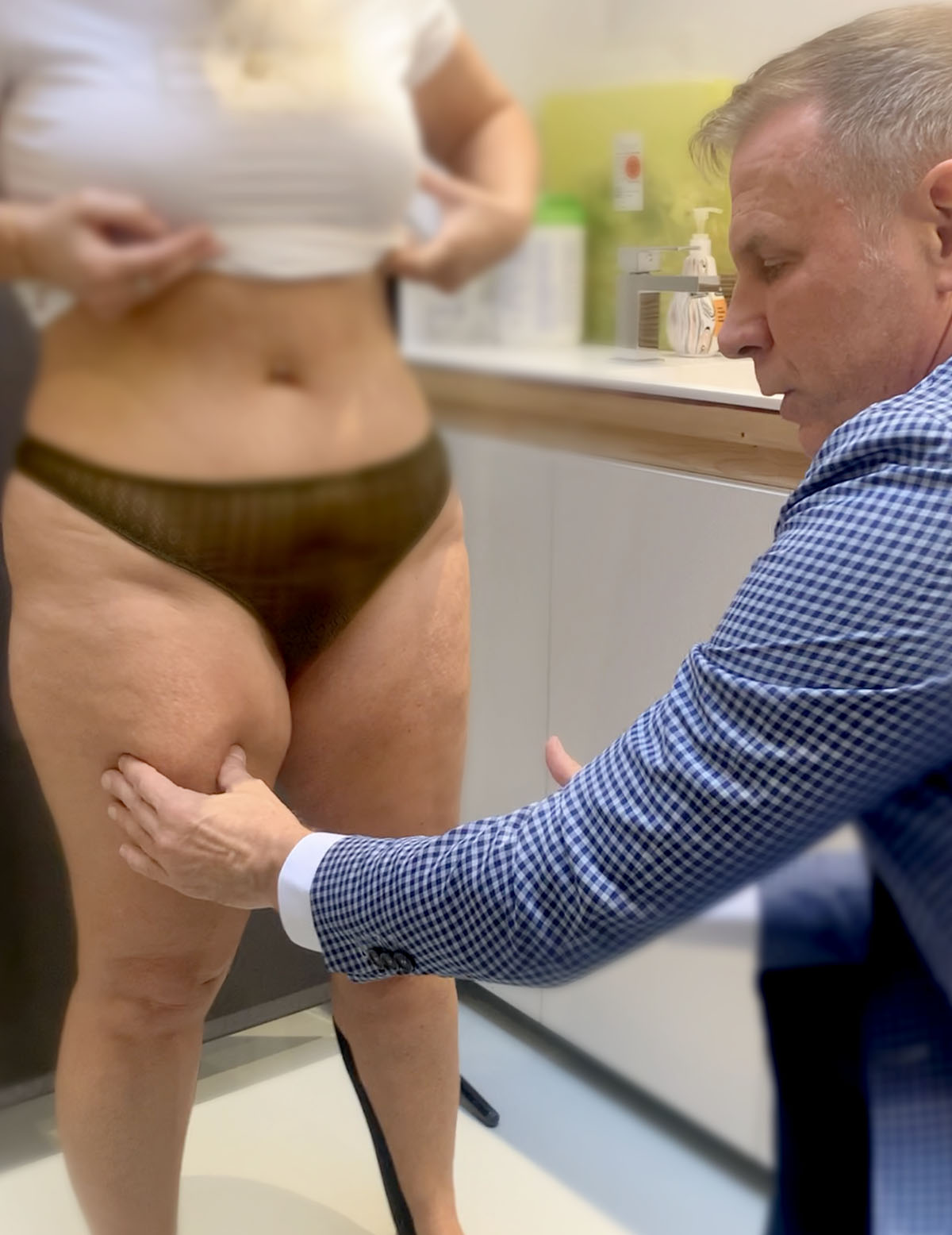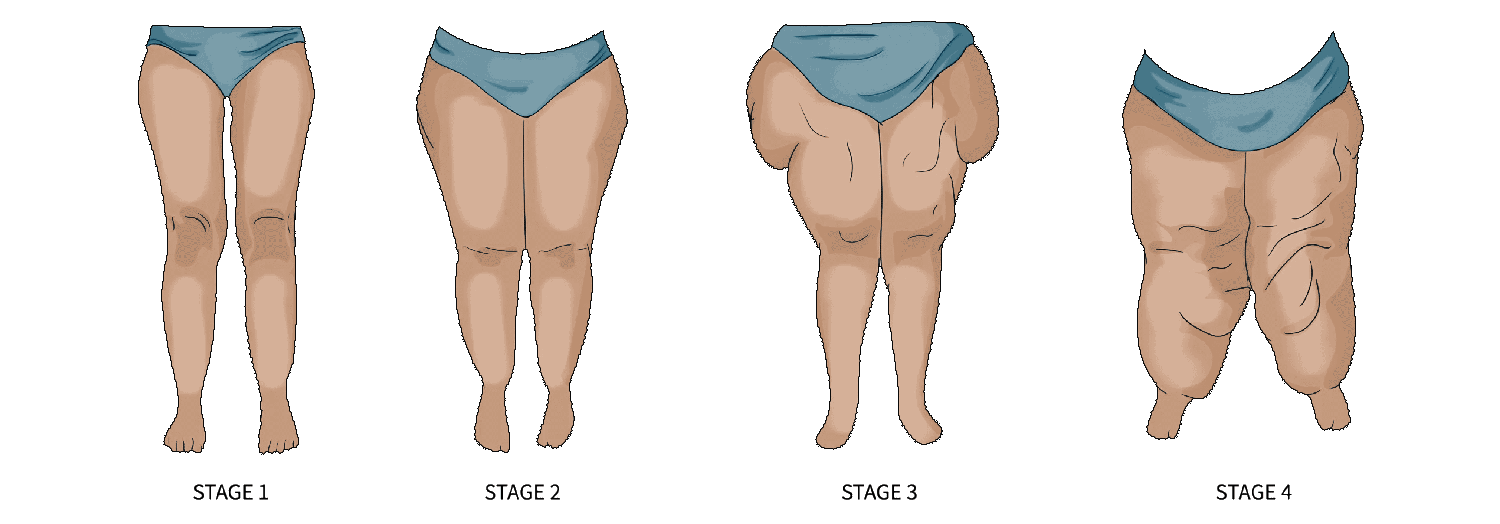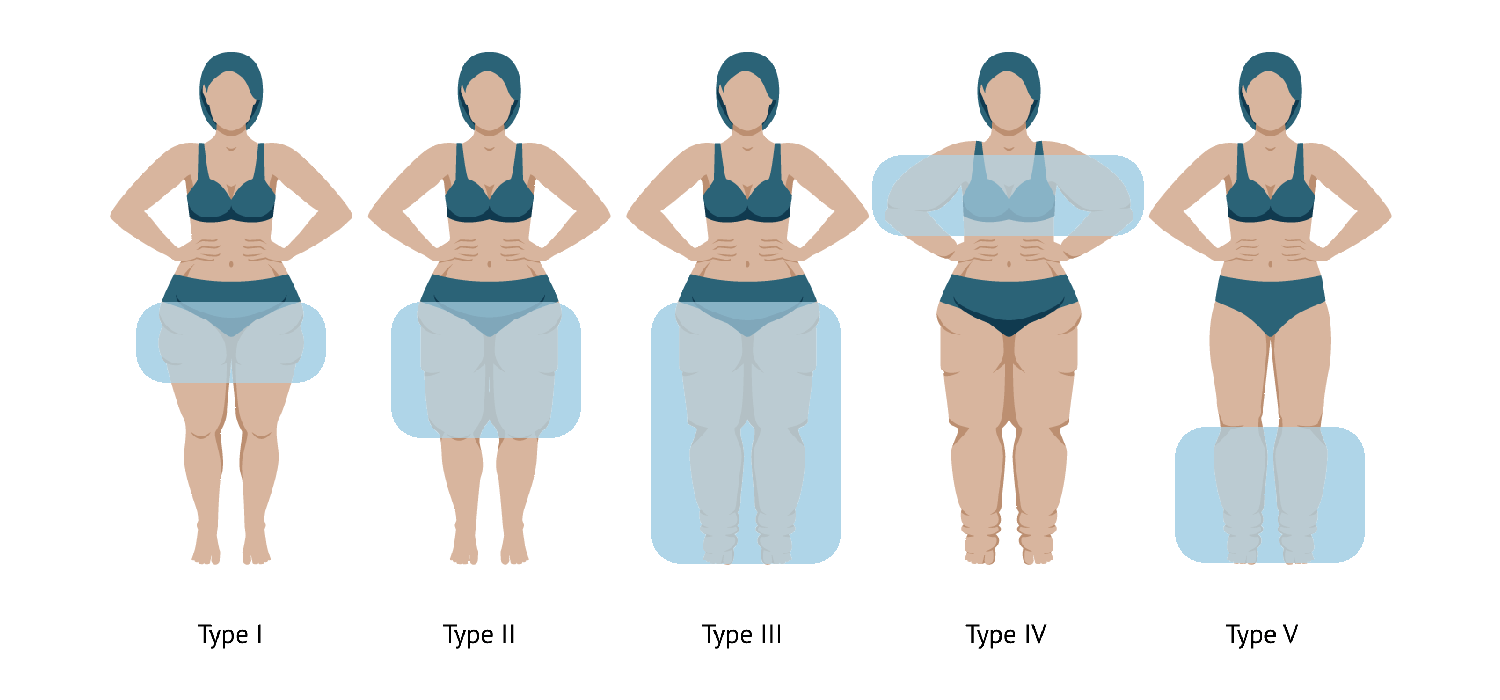Stages & Types of Lipedema
Lipedema is a progressive condition with distinct stages and types that influence its symptoms, treatment, and management.
At Lipœdème Montréal, Dr. Edouard Coeugniet, MSc., specializes in diagnosing and treating Lipedema, offering surgical solutions
for Lipedema tailored to each patient’s stage and type. This page explores the stages and types of Lipedema, helping patients
understand their condition and the importance of early intervention with treatments like liposuction specifically designed
for lipedema fat.
A comprehensive overview of Lipedema, including its distinct stages of progression
(e.g., Stage I through Stage IV) based on physical presentation and tissue changes,
and the different types (e.g., Type I through Type V) categorized by the specific
areas of the body affected by the abnormal fat deposition. This resource details
the key characteristics, diagnostic criteria, and clinical relevance of each stage and type.
Understanding Lipedema Stages
Lipedema progresses through four stages, each marked by increasing severity of symptoms and physical changes.
Recognizing the stage is critical for determining the appropriate Lipedema treatment in Montreal, as early intervention
can prevent complications like lipo-lymphedema.
Stage 1: Early Onset
- Characteristics: Skin appears smooth, but there is mild, disproportionate fat accumulation, often in the legs or hips. The fat has a nodular or “bean-bag-like” texture when palpated.
- Symptoms: Minimal discomfort, slight tenderness, or heaviness in affected areas. Bruising may occur easily.
- Impact: Patients may notice aesthetic changes but experience minimal functional limitations.
- Treatment: Conservative measures like compression therapy or manual lymphatic drainage may suffice, but Lipedema treatment with liposuction can prevent progression.
Stage 2: Moderate Progression
- Characteristics: Skin develops an uneven, dimpled texture resembling orange peel. Fat deposits increase, forming larger nodules.
- Symptoms: Increased pain, sensitivity, or heaviness, impacting daily activities like walking or standing.
- Impact: Mobility may be mildly restricted, and emotional distress may arise due to visible changes.
- Treatment: Liposuction specifically designed for lipedema fat is highly effective at this stage to reduce pain and volume, often combined with non-surgical therapies.
Stage 3: Advanced Lipedema
- Characteristics: Large fat lobules form, causing significant deformity and irregular contours. Skin may appear hardened or fibrous.
- Symptoms: Chronic pain, significant mobility issues, and pronounced tenderness. Swelling may begin to develop.
- Impact: Daily activities are markedly affected, and quality of life declines due to physical and emotional burdens.
- Treatment: Surgical solutions for Lipedema, such as Water Assisted Liposuction (WAL), are critical to remove fibrotic fat and improve function. Multidisciplinary care is often required.
Stage 4: Lipo-Lymphedema
- Characteristics: Significant lymphatic swelling (edema) accompanies large fat deposits, leading to severe limb enlargement and skin changes.
- Symptoms: Intense pain, severe mobility limitations, and increased risk of infections like cellulitis.
- Impact: Profound functional impairment and emotional distress, requiring complex management.
- Treatment: Lipedema treatment with liposuction may still be possible, but additional lymphatic therapies are essential to manage swelling.
Types of Lipedema
Lipedema affects different body parts, classified into five types based on the areas of fat accumulation. Identifying the type helps Dr. Coeugniet tailor surgical solutions for Lipedema to target specific regions.
Type I: Hips, Buttocks, and Thighs
- Fat accumulates in the hips, buttocks, and upper thighs, sparing the lower legs and feet.
- Common in early-stage Lipedema, creating a “saddlebag” appearance.
- Treatment focuses on reducing volume in these areas to alleviate discomfort and improve contour.
Type II: Hips to Lower Legs
- Fat extends from the hips to the lower legs, often stopping at the ankles.
- Patients may notice a “column-like” leg shape with a sharp cutoff at the ankles.
- Liposuction specifically designed for lipedema fat targets both upper and lower leg regions for balanced results.
Type III: Entire Legs
- Fat affects the entire legs, from hips to ankles, often with a “cuff” or bracelet-like appearance at the ankles.
- Associated with advanced stages and significant mobility challenges.
- Comprehensive liposuction is often required to address extensive fat deposits.
Type IV: Upper Arms
- Fat accumulates in the upper arms, sometimes in combination with leg involvement.
- Less common but can cause arm heaviness and restricted movement.
- Targeted liposuction can restore arm function and aesthetics.
Type V: Combined Legs and Arms
- Affects both legs and arms, with varying degrees of severity.
- Requires a strategic approach to prioritize treatment areas based on symptoms and patient goals.
- Dr. Coeugniet’s expertise ensures precise, lymphatic-sparing liposuction for optimal outcomes.


